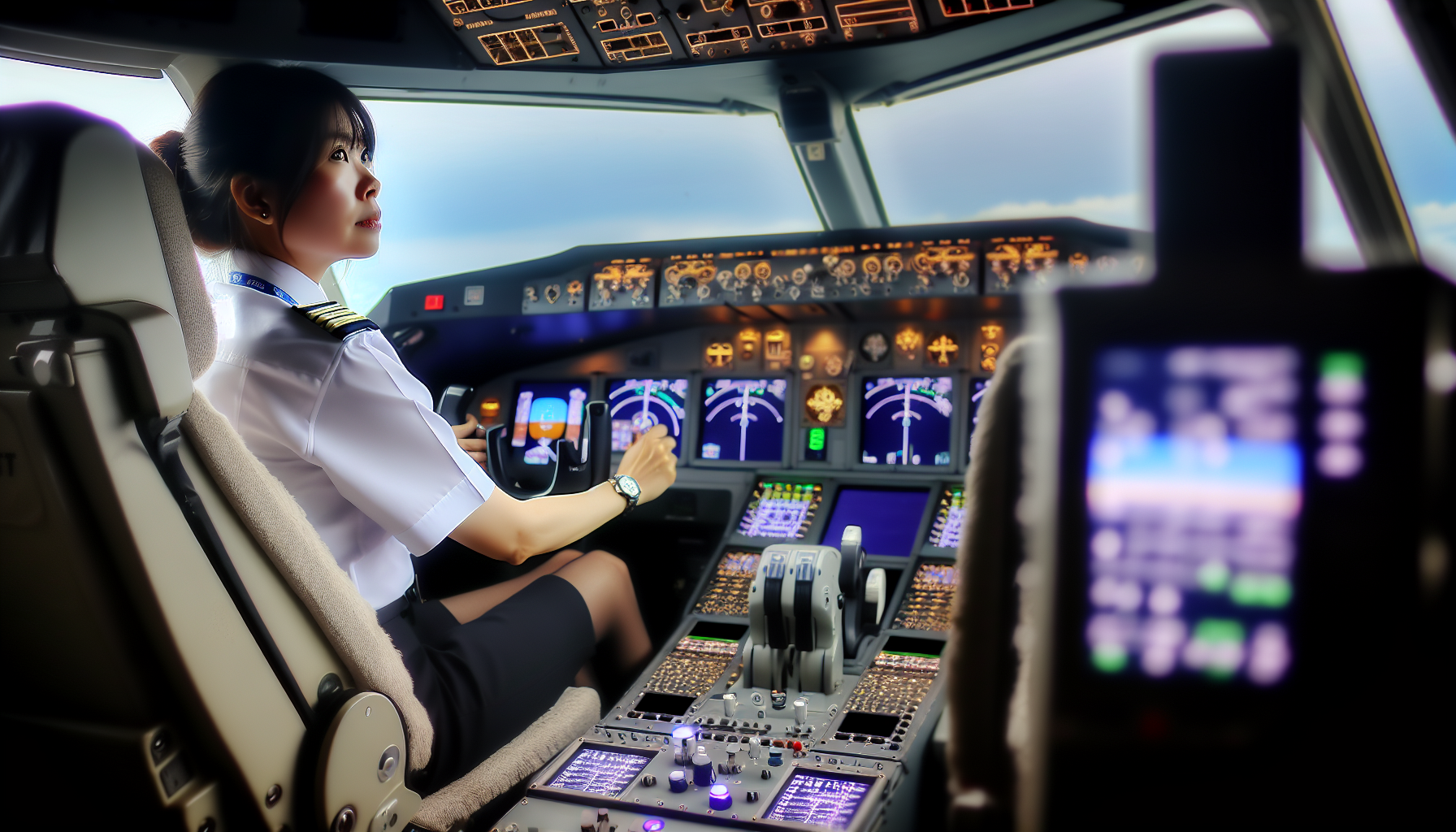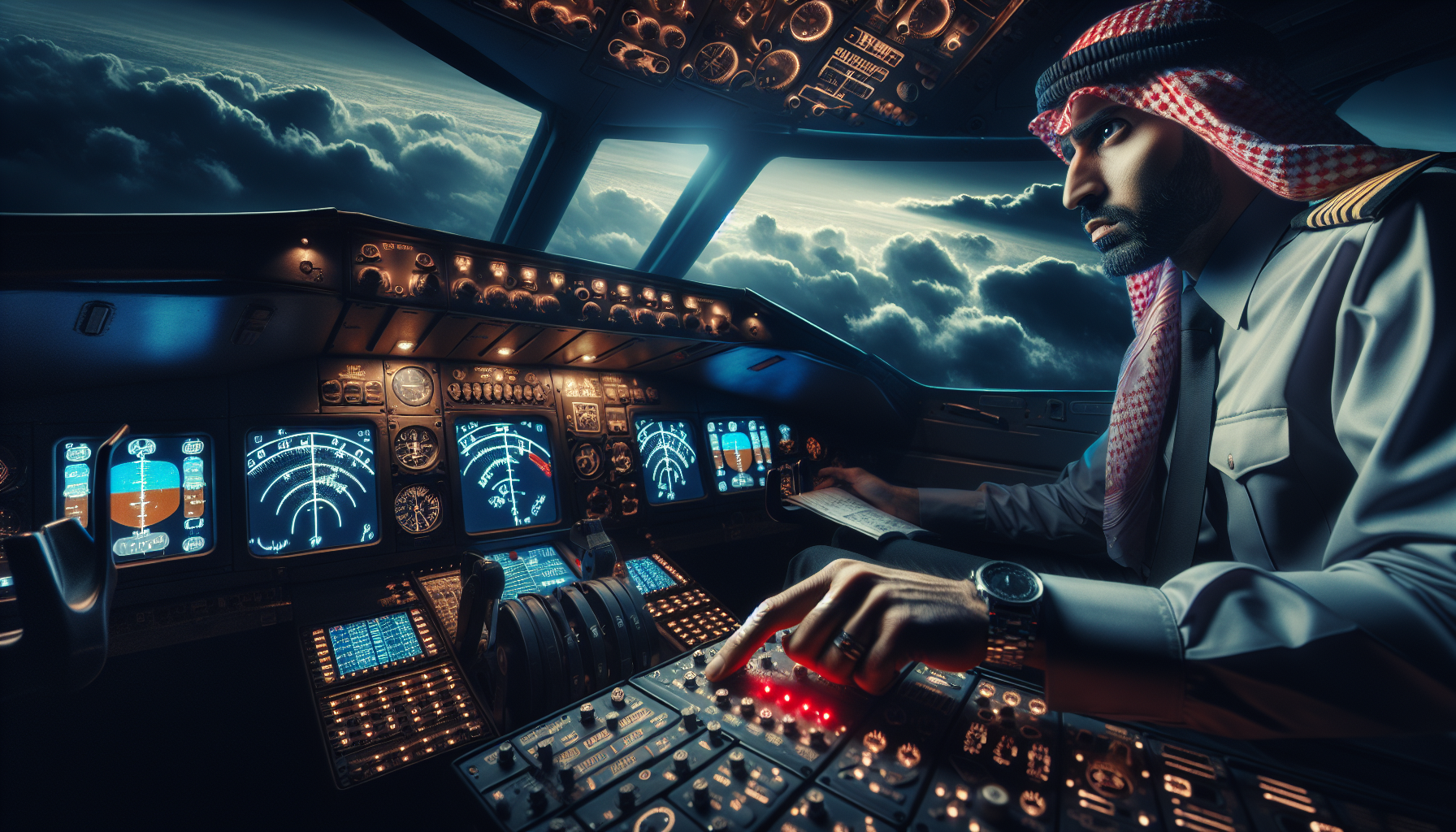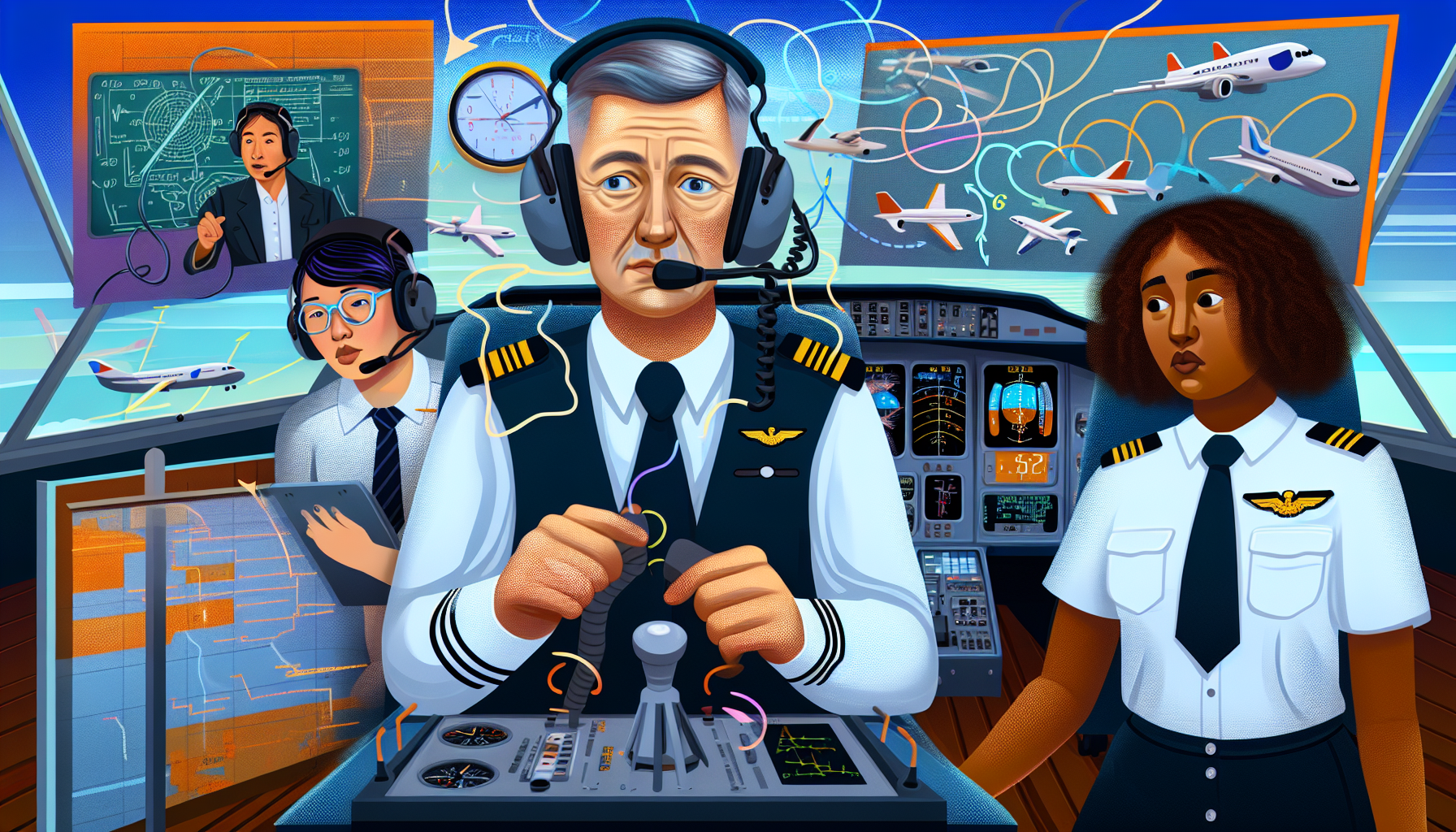How to Get Multi Engine Rating for Aspiring Aviators
Feb 27, 2024
Are you an aspiring aviator seeking to enhance your piloting skills and unlock the power of multi-engine flight? Obtaining a multi-engine rating can significantly broaden your career prospects and open up new horizons in the world of aviation. This comprehensive guide on how to get multi engine rating will walk you through the journey, covering preparation, training, certification, and career advancement for aspiring aviators.
Key Takeaways
-
This guide outlines the steps needed to obtain a multi-engine rating, including preparation for training and understanding aircraft systems.
-
Flight instruction provides exercises to help develop essential skills and knowledge in order to safely operate a multi engine aircraft.
-
Achieving a multi-engine rating can provide career benefits such as increased safety, access to high altitude operations and more career opportunities.
Unlocking the Power of Multi Engine Flight: Your Path to a Multi Engine Rating

Earning a multi-engine rating significantly upgrades your pilot certificate by enabling you to operate aircraft with multiple engines. This rating not only amplifies your piloting skills but also sets the stage for a potential airline pilot career. With this rating, you will be equipped to manage unique engine failure scenarios, a key skill for operating multi engine airplanes.
This guide provides a step-by-step approach, starting with preparing for multi-engine training, understanding multi-engine aircraft systems, and selecting the right training program.
Preparing for Multi Engine Training
Before you start your multi-engine training, you should have a comprehensive understanding of ground school topics like aircraft systems, principles of flight, aerodynamics, and weight & balance. Also, you should hold a valid FAA medical certificate, a requirement for private pilots to exercise their privileges, including flying multi engine airplanes.
While a written examination isn’t required for the multi-engine rating, acquiring multi-engine knowledge before the checkride is of paramount importance. Familiarize yourself with multi-engine aircraft systems and operations, as well as emergency procedures, to prepare for the practical test.
Understanding Multi Engine Aircraft Systems
Multi-engine aircraft systems, which involve more than one engine, are a key component of flight training, demanding pilots to handle multiple engines and systems at the same time. Key systems in a multi-engine plane include:
-
Engine condition
-
Gross weight
-
Density altitude
-
Precise airspeed control
-
Smooth control manipulation
Other systems such as cargo compartment fire suppression, communication, navigation, flight control, and wing systems should also be taken into consideration.
Understanding these complex systems allows pilots to operate multi-engine aircraft more efficiently and safely. For instance, retractable landing gear is a feature in many multi-engine aircraft, designed to minimize drag and enhance aerodynamic efficiency during flight.
Selecting the Right Training Program
When choosing a multi-engine training program, make sure to assess the following:
-
Curriculum
-
Certification process
-
Location
-
Reputation of the school
Accelerated multi-engine training programs are available, which can be completed in just a few weeks, including the checkride.
Consider your own learning preferences and schedule when choosing between an accelerated program and traditional training options. Regardless of the program you choose, make sure it covers the essential elements of multi-engine flight, such as aircraft systems, aerodynamics, and emergency procedures.
Mastering the Essentials of Multi Engine Operations

The goal of the multi-engine training program is to enhance piloting skills and boost confidence in operating multi engine planes. You will gain proficiency in:
-
Multi-engine aerodynamics
-
Regulations pertaining to multi-engine aircraft
-
Engine failure scenarios, including critical ability to shut down an engine in flight.
This section covers the essential skills and knowledge required for multi-engine operations, including complex aircraft proficiency, flight instruction, and simulation training.
Gaining Proficiency in Complex Aircraft
Gaining proficiency in complex aircraft systems and operations is key to ensuring pilots can operate multi engine airplanes safely and efficiently. Key skills required for proficiency in complex aircraft systems include:
-
Excellent analytical skills
-
Strong knowledge of aerodynamics, navigation, and meteorology
-
The ability to operate complex equipment and technology
-
Analytical thinking
Understanding complex aircraft systems can significantly improve a pilot’s overall proficiency and airmanship when operating multi engine airplanes. This includes developing the necessary skills and knowledge to handle a variety of flight scenarios safely and effectively.
Flight Instruction Focused on Multi Engine Mastery
Flight instruction for multi-engine mastery includes:
-
Control and procedures in the event of unique engine failure scenarios
-
Maneuver-based training, reviewing essential elements of maneuvers and procedures
-
Duration of training
During flight instruction, exercises such as engine control manipulation during taxi and Vmc (minimum control speed) demonstrations can effectively develop the necessary skills and knowledge to safely operate multi engine aircraft. These exercises will help you become proficient in operating and flying a multi engine aircraft while handling engine failures and other emergency situations.
Simulating Engine Failure and Other Procedural Challenges
Simulating engine failure and other procedural challenges is a fundamental part of multi engine flight training, giving pilots the chance to practice and refine the skills and procedures needed to respond to an engine failure in a multi engine aircraft. During simulation training, pilots will practice maintaining control of the aircraft and executing emergency procedures, such as maintaining airspeed, altitude, and heading.
To successfully complete the simulation training, pilots must demonstrate their knowledge, skills, and ability to safely operate a multi engine aircraft under various scenarios, including engine failures and emergency situations. Regular practice of engine failure simulations can help bolster a pilot’s capability to safely handle actual engine failures in multi engine aircraft.
Navigating the Certification Process

Acquiring a multi-engine rating involves going through the certification process, which includes fulfilling flight time requirements, passing the practical test, and comprehending post-checkride endorsements and subsequent steps. This section will guide you through the process, ensuring you are well-prepared to obtain your multi-engine rating and advance your pilot career.
Meeting the Minimum Flight Time Requirement
There is no specific number of hours required to receive a multi engine rating. However, most pilots take about 10-15 hours to gain enough experience to pass the practical check ride.
Because the time requirements are based on being able to show proficiency in multi engine procedures, it is important to note that flight time from a single-engine rating does not contribute to a multi-engine rating. In the world of the multi engine rating, practice makes perfect!
The Practical Test: Proving Proficiency
The practical test for a multi-engine rating requires the demonstration of competency in operating and flying a multi engine aircraft, including tasks such as engine management, emergency procedures, takeoffs and landings, and navigation. For successful completion of the test, you must show proficiency in simulating engine failure and emergency procedures, operating multi-engine aircraft, managing engine and system failures, and applying correct crew resource management techniques.
During the practical test, you will be evaluated by a designated pilot examiner who will assess your knowledge, skills, and ability to safely operate a multi engine aircraft. This includes an oral exam and a checkride to ensure you are well-prepared to handle various flight scenarios in a multi engine aircraft.
After the Checkride: Required Endorsements and Next Steps
Upon successful completion of the checkride, you will need to secure the necessary endorsements to officially acquire your multi-engine rating. Two endorsements from an instructor in your logbook or training record are required: one verifying competency in the applicable aeronautical knowledge areas and another for the practical test or checkride.
Once you have obtained the endorsements for your multi-engine rating, the next steps may involve pursuing additional ratings and endorsements such as an instrument rating or flight instructor rating. These ratings can further develop your skills and create new prospects in aviation, opening up opportunities for career growth and advancement.
Advancing Your Pilot Career with a Multi Engine Rating

A multi-engine rating can greatly upgrade your pilot career, offering several benefits like enhanced safety through redundancy and the ability to operate aircraft with multiple engines. This section explores the benefits of obtaining a multi-engine rating for private pilots transitioning to pilot in command, the role of a multi-engine rating in an aspiring airline pilot’s journey, and expanding horizons with high altitude operations and more.
From Private Pilot to Pilot in Command
Earning a multi-engine rating enables those with a private pilot certificate to transition to pilot in command, giving them the authority to operate aircraft with multiple engines. This additional qualification enhances a pilot’s career prospects and broadens their skill set, allowing them to fly larger and more advanced aircraft.
To successfully transition from a private pilot to pilot in command with a multi-engine rating, pilots must possess comprehensive knowledge of multi-engine aircraft systems and operations, as well as proficiency in multi-engine flight maneuvers and emergency procedures. This enhanced skill set will allow pilots to confidently take on the responsibilities of pilot in command in a multi engine aircraft.
The Role of a Multi Engine Rating in an Airline Pilot's Journey
A multi-engine rating is a must for aspiring airline pilots, as it allows them to:
-
Fly larger aircraft
-
Enhance their overall airmanship
-
Showcase a higher level of skill and proficiency
-
Become more competitive in the airline sector
With a multi-engine rating, pilots can pursue opportunities at regional airlines that require multi-engine experience and engage in high altitude operations. This additional qualification can significantly enhance a pilot’s career opportunities, opening up new possibilities and career paths within the airline industry.
Expanding Horizons: High Altitude Operations and More
A multi-engine rating can broaden the opportunities for pilots, enabling them to undertake advanced operations like high altitude flights. With this rating, pilots can operate aircraft with more powerful engines, resulting in increased performance capabilities and the ability to cover greater distances.
In addition to high altitude operations, a multi-engine rating offers pilots the opportunity to work for companies providing aerial surveying, aerial photography, or other types of aerial services. This expanded skill set can unlock new career opportunities and further develop a pilot’s proficiency and expertise in the world of aviation.
Summary
Obtaining a multi-engine rating is a significant milestone for aspiring aviators, offering numerous benefits such as increased safety, improved performance capabilities, and expanded career opportunities. By following this comprehensive guide, you will be well-prepared to embark on your journey towards multi-engine mastery, unlocking the power of multi-engine flight and taking your pilot career to new heights.
Frequently Asked Questions
How much does it cost to get a multi engine rating?
The Multi Engine Rating package costs range between $2000 and $6000 and includes fuel. Examiner fees are not included.
What is requirements to get a multi engine rating?
To receive a multi engine rating, you must be 18 years or older, have the necessary ground and flight instruction, hold a current medical certificate and complete a successful flight test.
How long does it take to get multi engine rating?
With proper preparation, a multi-engine rating can usually be achieved within two weeks.
Is there a written examination required for obtaining a multi-engine rating?
No, there is no written examination required for obtaining a multi-engine rating.
